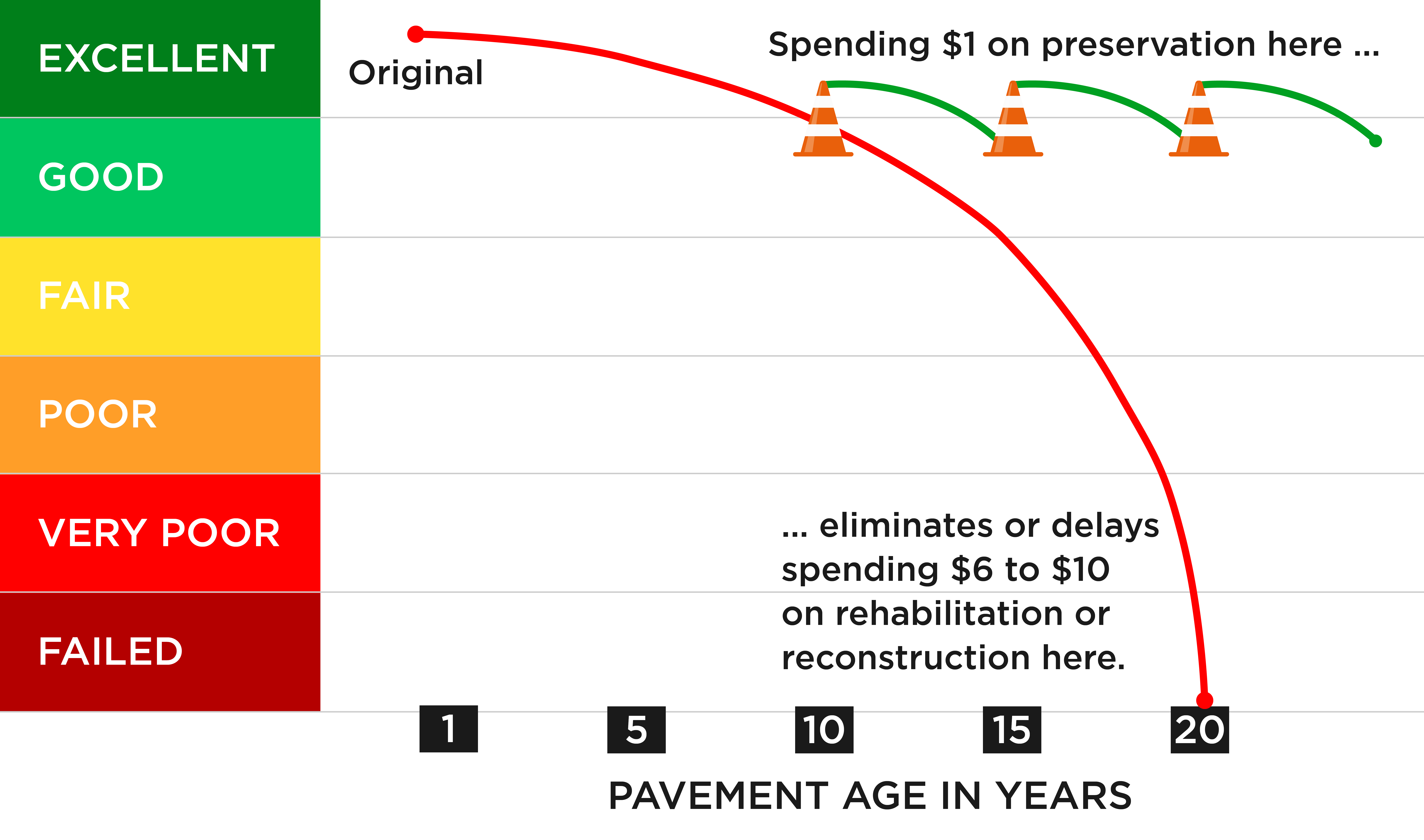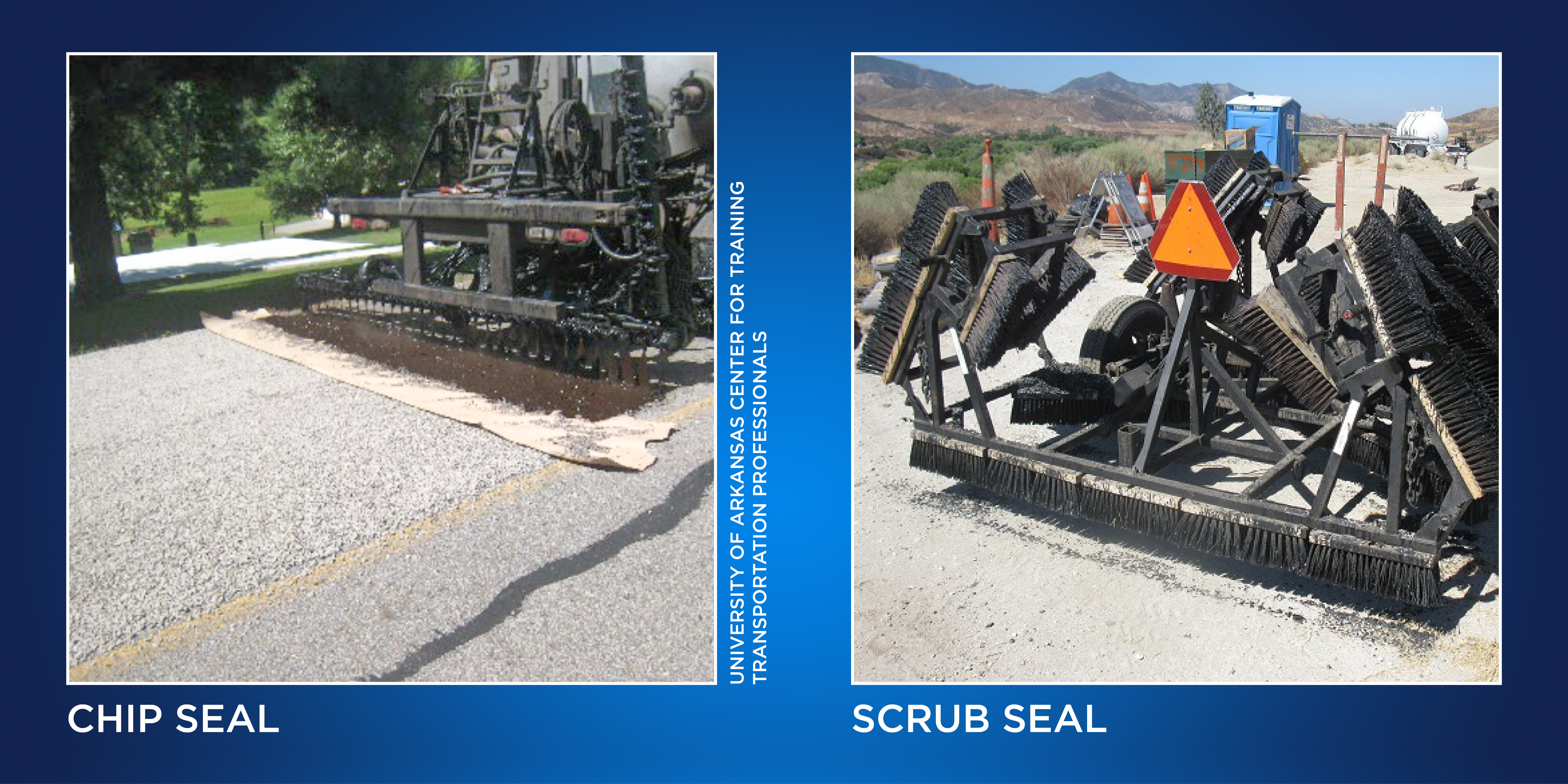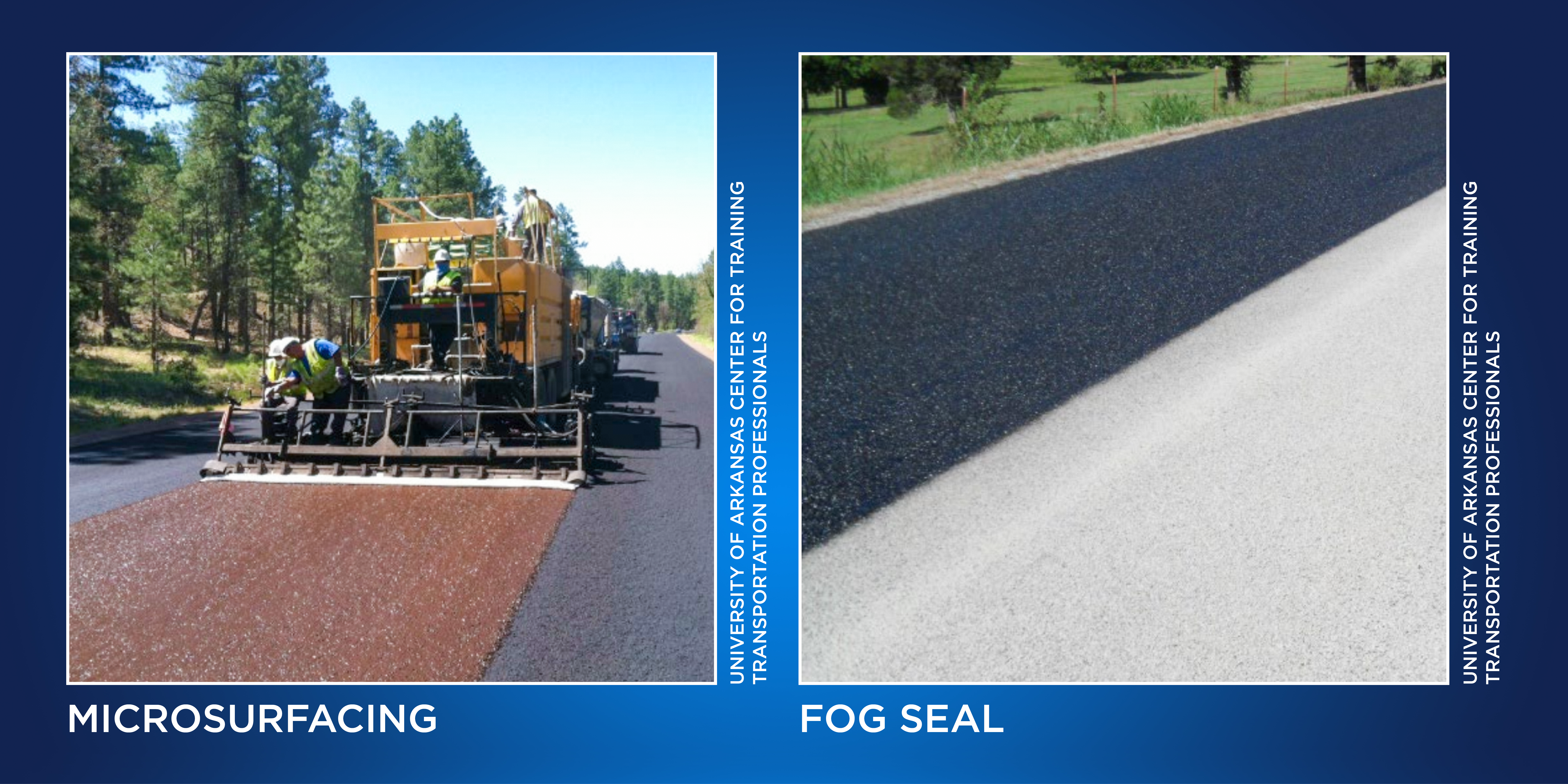Asphalt Pavement Preservation Saves Roads and Budgets
Demands on public roadways and overall transportation budgets increase seemingly every year. While quality and safety are critical roadway components, the financial burden to maintain and repair those facilities is high and becomes a primary struggle for municipal public works departments.
New asphalt pavement that is installed correctly is a driver’s dream because of its smoothness. It reduces daily wear and tear on vehicles. It channels water well and promotes efficient traffic flow.
However, that newness fades with time, and asphalt begins to crack. Left untreated, cracks deteriorate further and become potholes. In due time, an expensive reconstruction is in order.
Municipalities can implement asphalt pavement preservation techniques to proactively maintain their roads in an excellent or good condition. This preventive approach extends the life of the road, prevents a pricey rehabilitation or reconstruction and allows public works departments to stretch their dollars.
Consulting with a pavement professional is an important step to ensure you get a cost-effective product that lasts. A professional will conduct an inspection, if necessary, determine which method is appropriate to address the road’s condition and create specifications prior to the bidding process.
Condition assessments have become highly automated to the point where vehicles outfitted with specialized cameras, sensors and lasers record detailed measurements. The process considers asphalt performance, material quality, traffic loading and environmental factors. It’s important these surveys are performed every two to three years.
Studies have shown that for every $1 spent on pavement preservation while it is in excellent or good condition, $6 to $10 are spent on a pricey rehabilitation or reconstruction when the original pavement falls into a fair condition or worse.
Preservation Techniques
One of the worst enemies for asphalt is water that has gotten into the subgrade. Water can weaken subgrade materials and cause heaving when underlying soil expands or—in cold-weather environments—the water freezes underneath.
There are several techniques and strategies to seal asphalt and keep it in good working condition for many years. These techniques provide a significant cost savings vs. having to perform a complete reconstruction of the roadway.
(Excerpts of the descriptions below were sourced from the University of Arkansas Center for Training Transportation Professionals.)
Chip seal: This technique begins with an application of a heated asphalt liquid—called a tack coat—on the road surface. After the tack coat is sprayed using a distributor truck, the immediate placement of small aggregate (chips) is made using a chip spreader. The chips are compacted and adhere to the existing surface because of the tack coat.
Chip seals are not structural in nature and will not correct significant structural failures. However, they are an excellent choice for correcting surface distresses and for slowing the deterioration of mild to moderate and high-density cracking. The chip seal approach, which can prolong the lifespan of a road by several years, protects the asphalt from weather and offers more skid resistance. However, it may not be the best option for high-traffic areas or intersections in which traffic cannot be feasibly restricted during the work because of its longer curing time.
Scrub seal: The scrub seal method is similar to the chip seal treatment. A viscous, asphalt-like liquid is applied to the surface, but the difference occurs with the “scrub.” A squeegee-like series of brushes working from different angles is pulled behind the distributor vehicle to ensure the liquid asphalt is sealing all cracks thoroughly.
A scrub seal is an effective treatment for treating roadways with widespread cracking. Best results are achieved when the cracks have been cleaned thoroughly and the brush assembly is properly adjusted for roadway cross-slope.
Micro seal: Micro seal or microsurfacing is a very thin overlay—about five-eighths of an inch thick—comprising a fine mineral aggregate, asphalt and asphalt emulsion. This material is rolled and enhances the quality of the wearing surface.
Microsurfacing has proven to be successful in preserving aging asphalt by correcting surface deficiencies (leveling or rutting), sealing minor cracks and providing an impermeable surface, but it is not intended to alleviate structural problems such as fatigue cracking, poor subgrade quality or potholes. Localized structural failures should be addressed prior to the microsurfacing application.
Fog seal: A fog seal application is similar to the micro seal or microsurfacing technique. It incorporates smaller asphalt chips—a grittier type of aggregate. It can be applied to any type of roadway to improve the wearing surface.
All asphalts age and become brittle over time, and this process may be quicker for conventional binders. Fog seals can delay the aging process and seal small age-induced cracks, prolonging the life of the pavement. Rejuvenating emulsions can even soften aged binders and help to reverse the aging process.
Reach Out to a Professional Today
These techniques are most effective when serving as asphalt preservation treatments, not corrective measures.
Halff’s professionals can assist you with finding the proper method to achieve a product that endures—and prior to that assessing facilities, preparing specifications and putting together bid packages so the most cost-effective solution can be realized.
Reach out to our Public Works practice at Info-PublicWorks@Halff.com.





